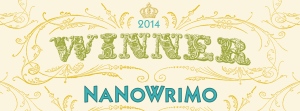James Patterson is in town this week. Whilst I’m not really a fan, you can’t argue with a guy who’s sold 300 million books. I went along to hear him speak and hoping to catch any snippets any wisdom. Hoping, perhaps some of his success would rub off on the audience. Here’s my take on his story, his process and the importance of self-promotion.
My first impression, what a down to earth guy! Witty, self-deprecating and a little bit cheeky, the talk was very entertaining, with many chuckles. Not at all what I expected…
His story
- Started reading again for pleasure while working the night shift in a mental hospital
- Every short story he submitted was rejected
- His first novel – The Thomas Berryman Number was rejected 31 times before winning the Edgar Award for Best First Novel
- At his acceptance speech for the Edgar, he said “I guess I’m a writer now.”
- The highlight of his Hollywood career was appearing the Simpsons, as a fantasy of Marge’s.
His wisdom included…
Writing craft and his own process
- The best writing is crisp and short, including short chapters. He repeatedly used the word “crisp”.
- His strength – to turn anything into a story
- His weakness – patience to truly hone his work, rather than moving on to the next project
- On co-writing, he sees it as a team effort. Screenwriters/TV writers work in teams. He also uses researchers.
- On characters, the reader does not need to know everything about a character, only what makes them interesting.
Why people like thrillers (especially his own)
- Solving puzzles
- Involvement with both the hero and the villain
- Satisfactory endings – so lacking in everyday life or true crime
Key takeaway – Self promotion
I was really interested in how he developed his own ad for “Along Came a Spider”. Working in advertising at the time, he pitched an ad to his publishers. They rejected the idea, but he went ahead and did it himself out of his own pocket. This advertisement helped push the book into the best seller lists. A great example of taking control of your own marketing and brand.
He told a great follow-up story, where he watched a woman pick up his book in a shop and was filled with delight, only to see her slip the book in her handbag without paying. Does shoplifting count as a sale?
He also spoke on the need to support independent bookshops (worried about the Amazon monopoly) and building a passion for reading in children. Here here!
An enjoyable evening with a few nuggets of wisdom for this budding writer.

www.jamespatterson.com



_cover.jpg)































